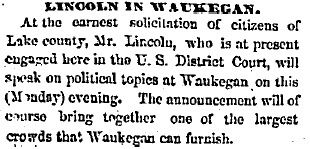
Chicago Press and Tribune, April 2, 1860.
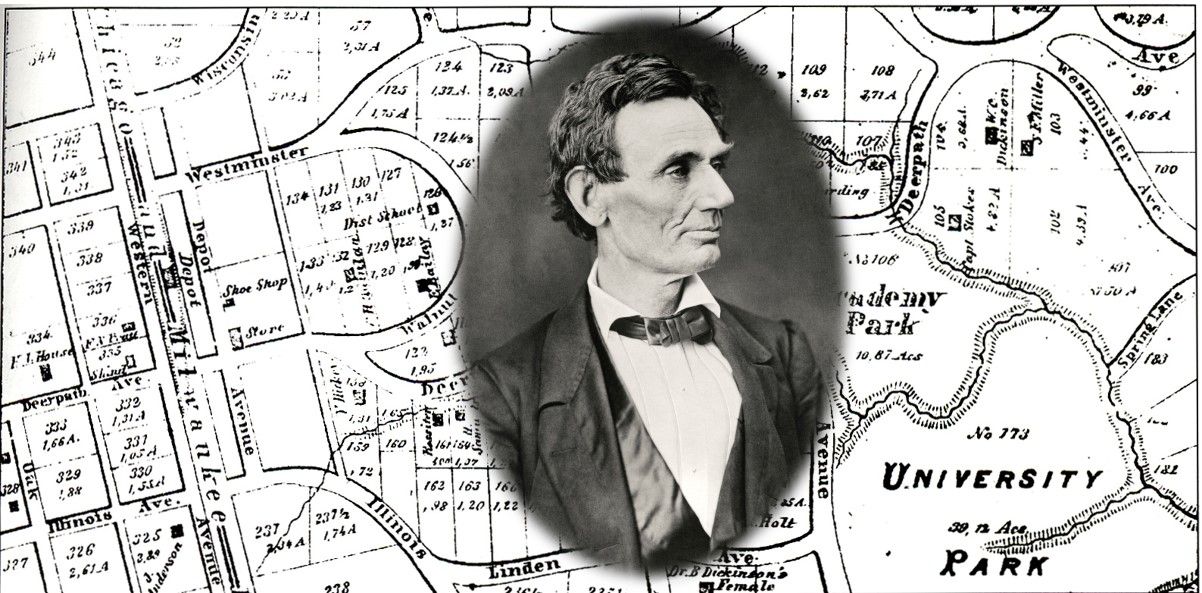
Lake Forest map, 1862.

Chicago Press and Tribune, April 2, 1860.
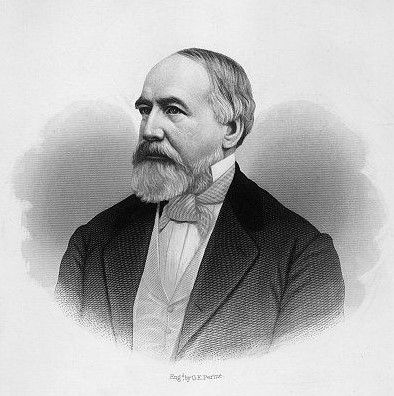
Norman B. Judd.
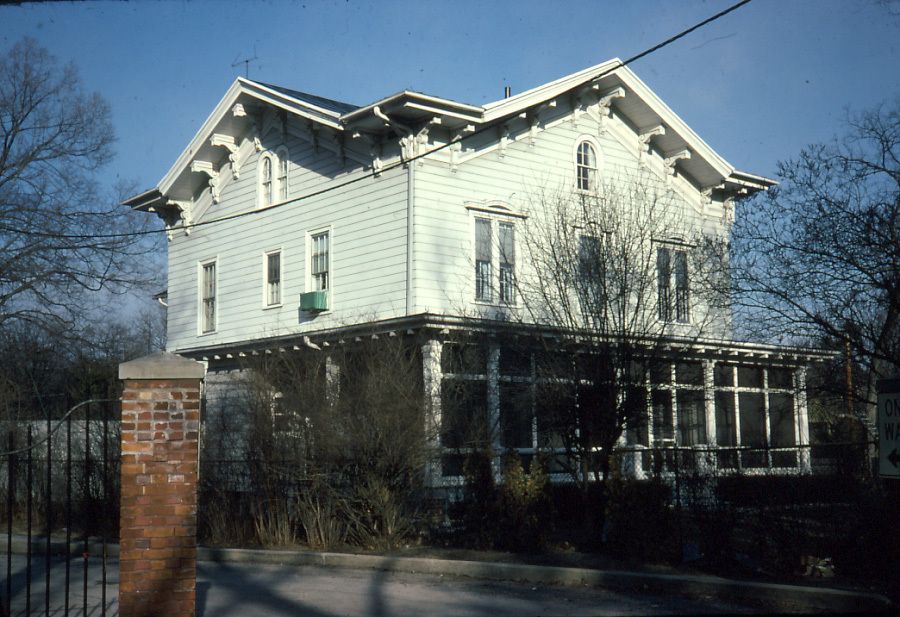
408 East Illinois Road, pictured 1984. The house was originally built in 1859 and stood on Deerpath.
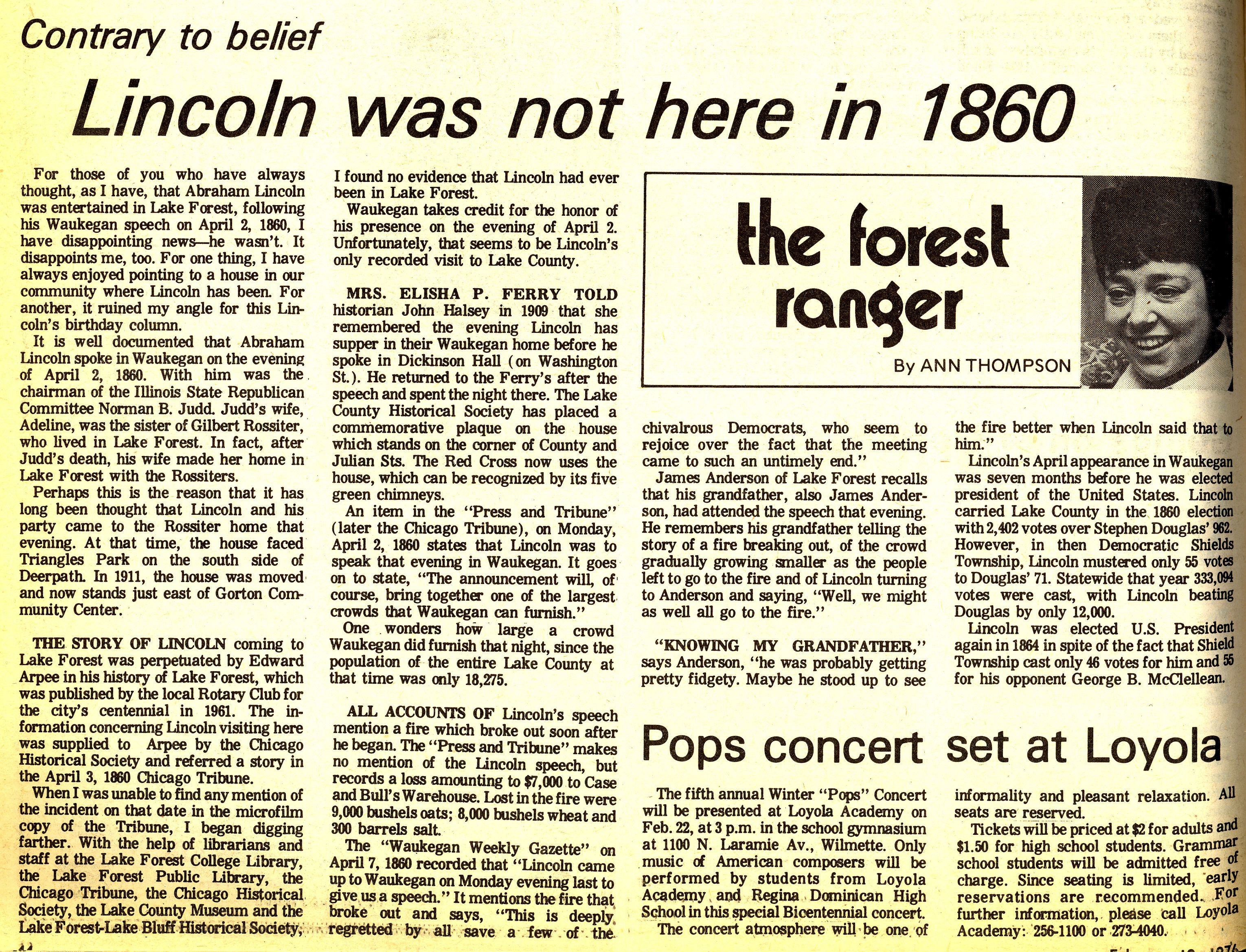
Lake Forester, February 12, 1976.
Answer: Probably not.
Few American historical figures of 150 years ago have had their movements better documented than Abraham Lincoln. In late March, 1860, Lincoln was working as a lawyer while preparing for a presidential run. He came up to Chicago to argue a case (Johnston v. Jones & Marsh, which involved title to land north of the Chicago River) before the U.S. Circuit Court.
The reason that the rumor surfaced that Abraham Lincoln came to Lake Forest on this occasion is likely because he had connections here. Accompanying Lincoln to Waukegan for his speech was Norman B. Judd, chairman of the Illinois State Republican Committee. Judd was a valuable friend and political adviser to Lincoln, and just over a month later he nominated Lincoln for president at the Republican convention in Chicago.
Norman B. Judd's sister, Adeline, was married to Gilbert Rossiter and lived in Lake Forest. The Rossiter home faced Triangle Park on the south side of Deerpath. Around the turn of the century, the house was moved and now stands just east of Gorton Community Center at 408 East Illinois Road.
No known documentary evidence has surfaced placing Abraham Lincoln in Lake Forest. However, is there a possibility that Lincoln and Judd stepped off the train in Lake Forest for a brief morning or afternoon visit to the Rossiters and then re-embarked, on the way to or from Waukegan on April 2 or 3? Certainly it can't be ruled out; however, it must be remembered that in 1860 only a small number of trains ran to Waukegan, and the speed was much slower.
In 1976, amidst a revival in interest in historical questions brought by the nation's Bicentennial, local writer Ann Thompson investigated the Lincoln story for the Lake Forester - read her article below.